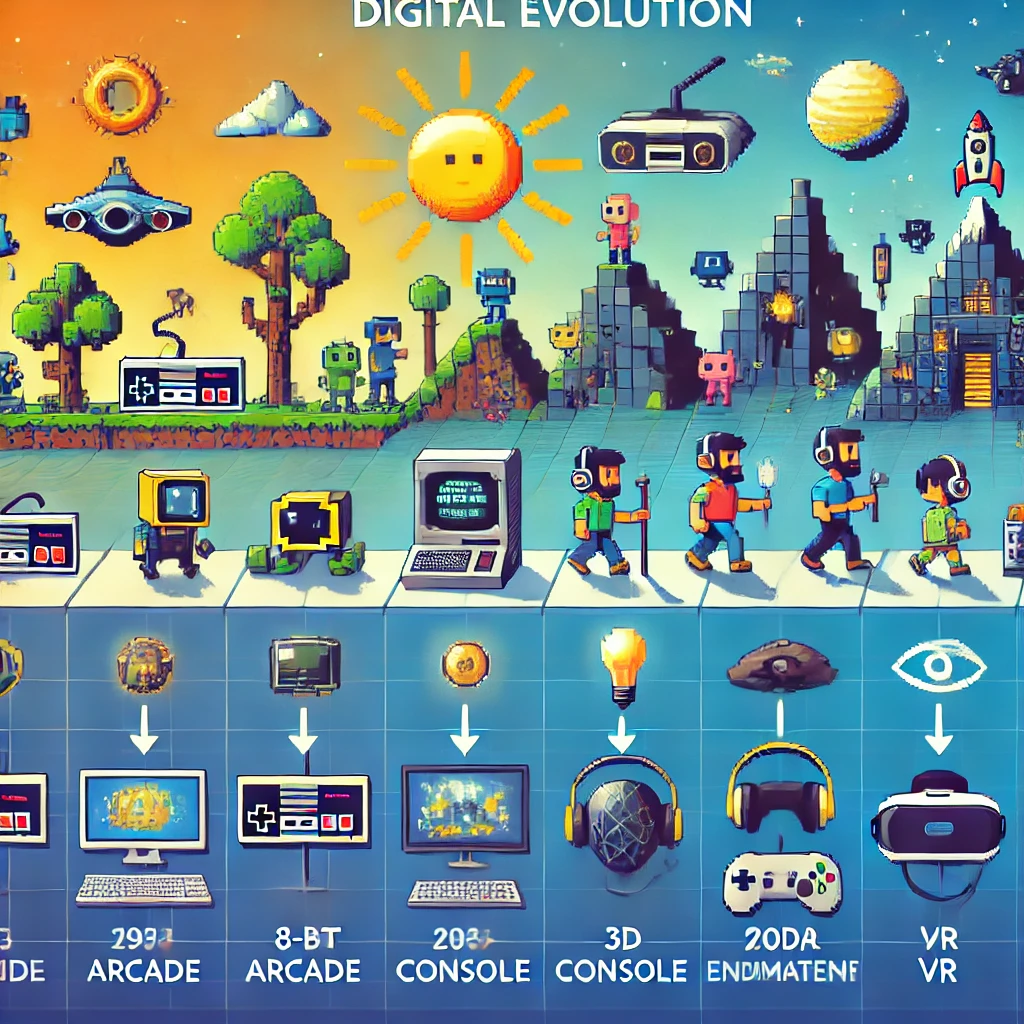Game design has transformed radically over the last few decades—from pixelated characters and static backgrounds to open worlds, photorealistic visuals, and emergent gameplay systems. Understanding this evolution reveals not only how games have changed, but also how players’ expectations have grown.
8-bit Beginnings
In the early 1980s, limitations of hardware meant designers had to rely on creativity rather than complexity. Games like Tetris, Pac-Man, and Super Mario Bros. were built on simple mechanics and tight design loops.
The 3D Revolution
The late 90s saw a shift with titles like Super Mario 64 and Tomb Raider introducing 3D environments, dynamic cameras, and exploration-focused gameplay. This era introduced spatial awareness and freedom in movement.
Storytelling and Cinematics
As consoles advanced, so did narrative. Games like Metal Gear Solid and The Last of Us pushed storytelling to cinematic levels with voice acting, motion capture, and emotional arcs.
Modern Design Trends
Today, we see:
- Open-world systems that prioritize player agency
- Procedural generation for infinite variability
- Live service models that continuously evolve games post-launch
- UI/UX design that balances immersion with accessibility
Game design now blends psychology, systems theory, and art direction in ways early developers could never have imagined.



Leave a Reply